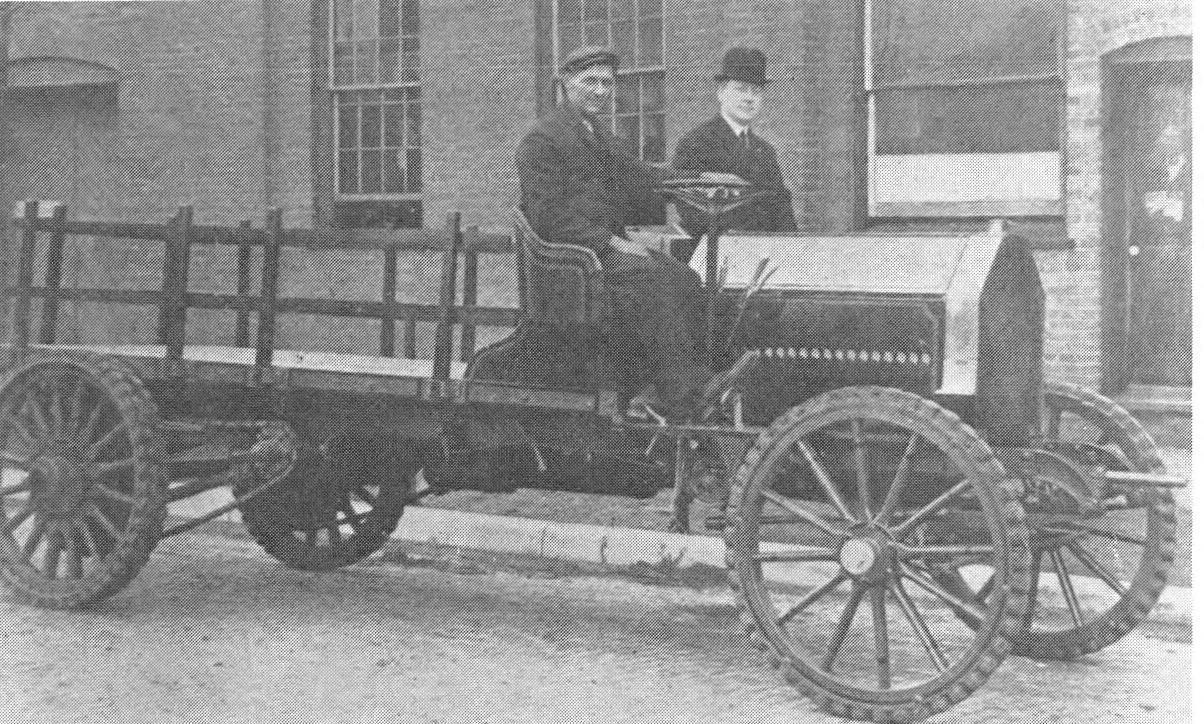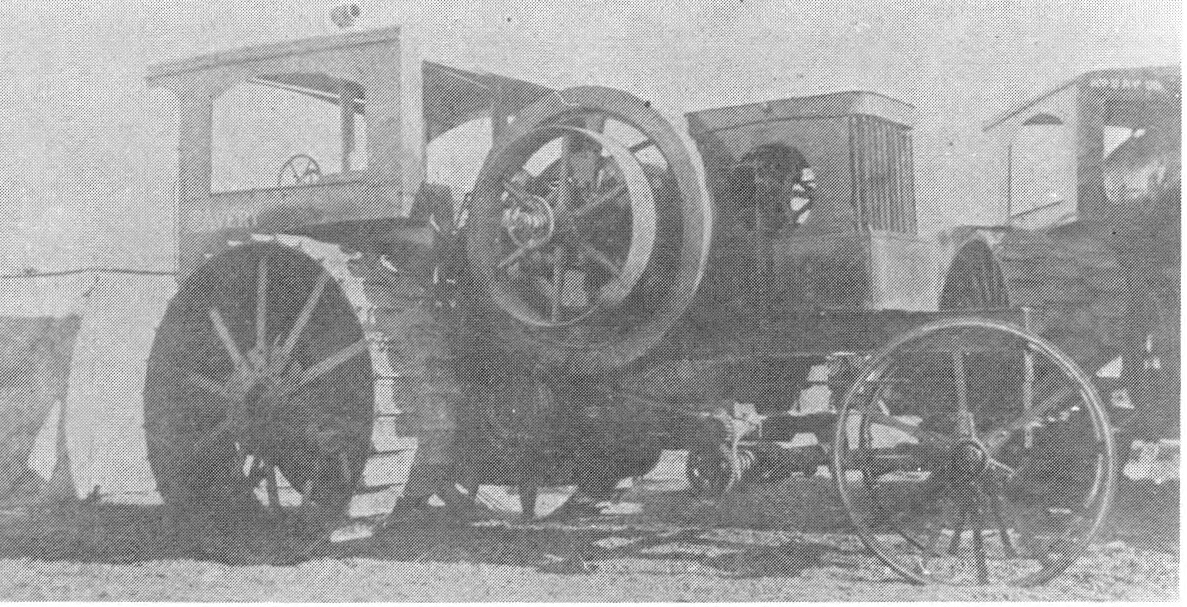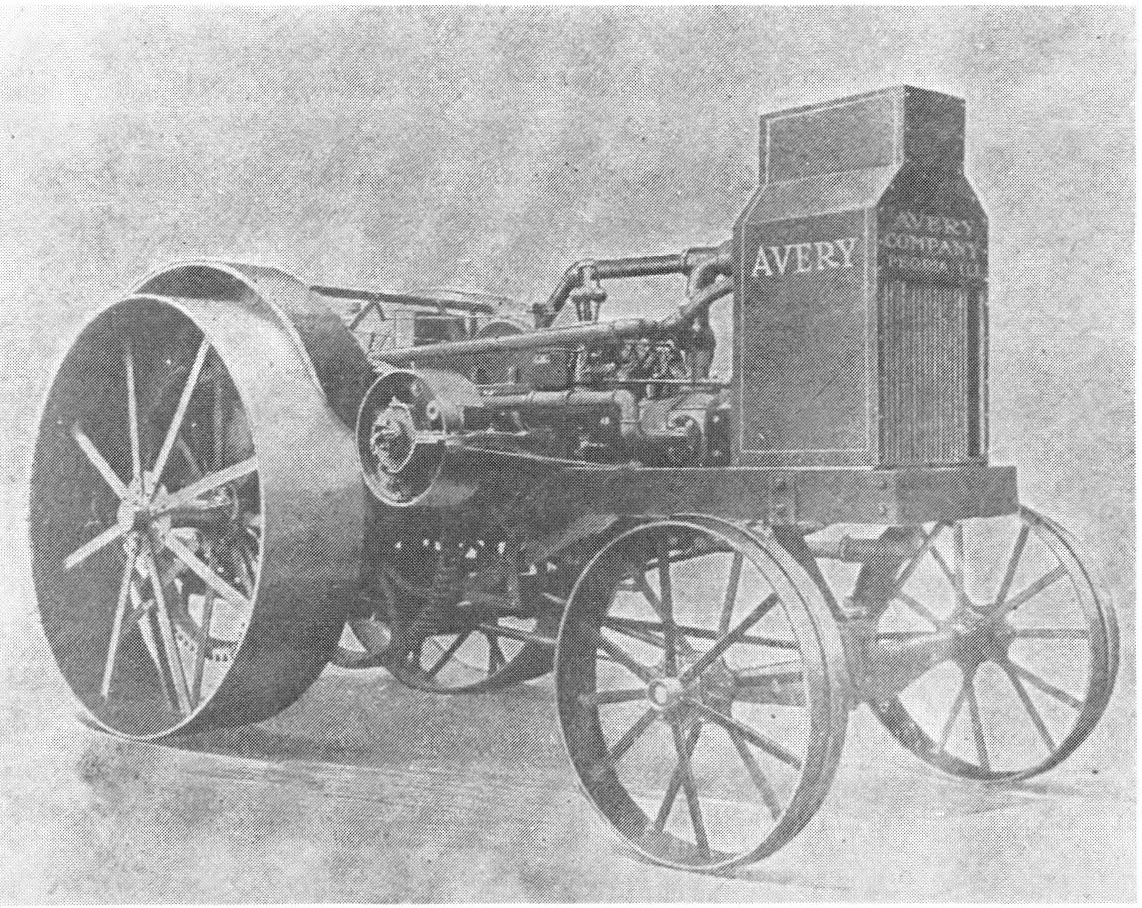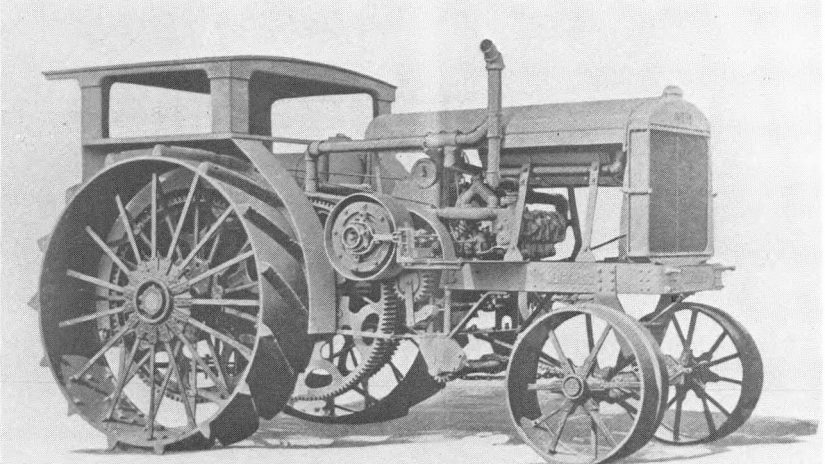Robert H. and Cyrus M. Avery formed the Avery Planter company at Galesburg, Illinois in 1874. Robert Avery had developed some ideas about corn planters during his imprisonment at Andersonville, during the Civil War. After returning home, Avery began putting his ideas into practice, and by 1874, a working model of his planter was showing signs of success.

Planters, cultivators, and stalk cutters created an excellent line, and with a continuing business growth, the Avery brothers relocated to Peoria, Illinois in 1884.
In 1891 the firm began building steam traction engines and threshers; these were to be the mainstay of the Avery business for many years.
In 1893, John B. Bartholomew, a relative of the Avery’s, became Vice-President of the company. Having started with the company at the age of 15, “J.B.” proved himself to be a big man in many ways — not only in physical stature, but also as an inventive and financial genius. After the death of the Avery brothers, Bartholomew continued his rise to power by assuming the presidency of the Avery Company.

Under J.B.’s guidance, Avery Company introduced the famous Avery Undermounted steam engine. It was a roaring success, but about this time Hart-Parr and a few other tractor companies were beginning to make inroads into the steam engine market. Accordingly, Avery approached this new market with a “farm and city” tractor introduced in February, 1909. Apparently, the strategy was to provide an outfit suitable for small farms and acreages — reserving the larger steam outfits for the heavy work.

It soon became obvious that “ tractors” were here to stay, and Avery met the challenge with a single cylinder outfit of gargantuan size. This 1910 outfit made such a poor showing that it was withdrawn while still in the prototype stage. By 1911, a 20-35 model was on the market — and this time everything worked.
Albert O. Espe, who had designed the C.O.D and Universal tractors at Crookston, Minnesota, was responsible for the original Avery design. The first patent, No. 1,185,076, was purchased by J. B. Bartholomew for $25,000, and Espe was hired at a handsome salary. The other pertinent Avery tractor patents are: 1,199,254; 1,199,333; and 1,199,334.
Within a couple of years, Avery was offering a full line of tractors. In fact, the Avery line was overdone with only a slight horsepower difference from one size to another. This led to excessive parts inventories and unnecessarily increased the overhead.
Avery Company continued to build the same massive heavy-weight tractors into the 1920’s — a time when modern light-weights were coming to the forefront. Although J. B. was a pioneer in the development of motor cultivators, they were a passing fancy and could not support the losses being incurred by the heavyweight models. The fierce competition in the industry coupled with localized crop failures and generally poor economic conditions led to the untenable position of absorbing loss after loss.
In early 1924, Avery Company went into bankruptcy. By July, the company was reorganized as Avery Power Machinery Company.




